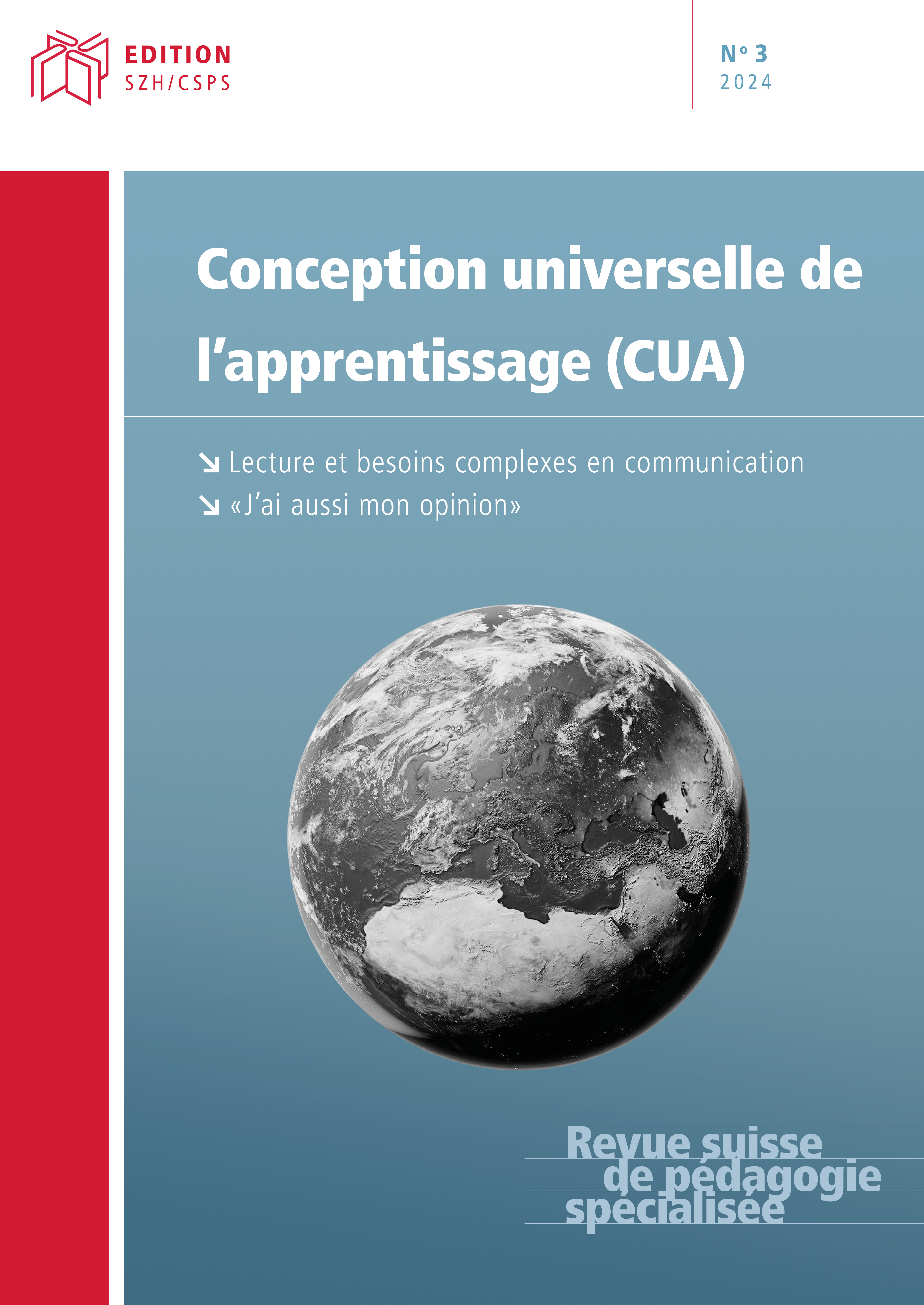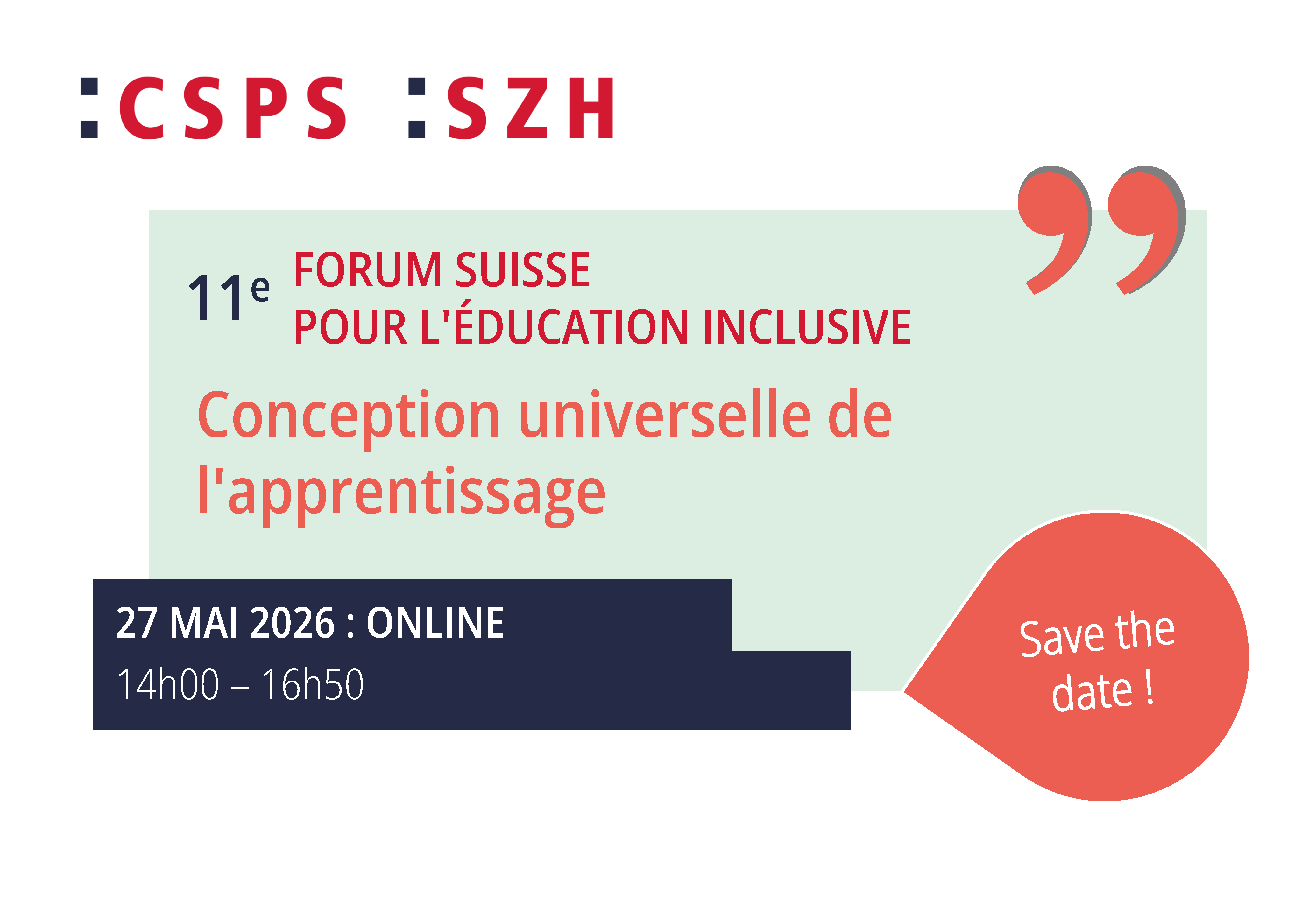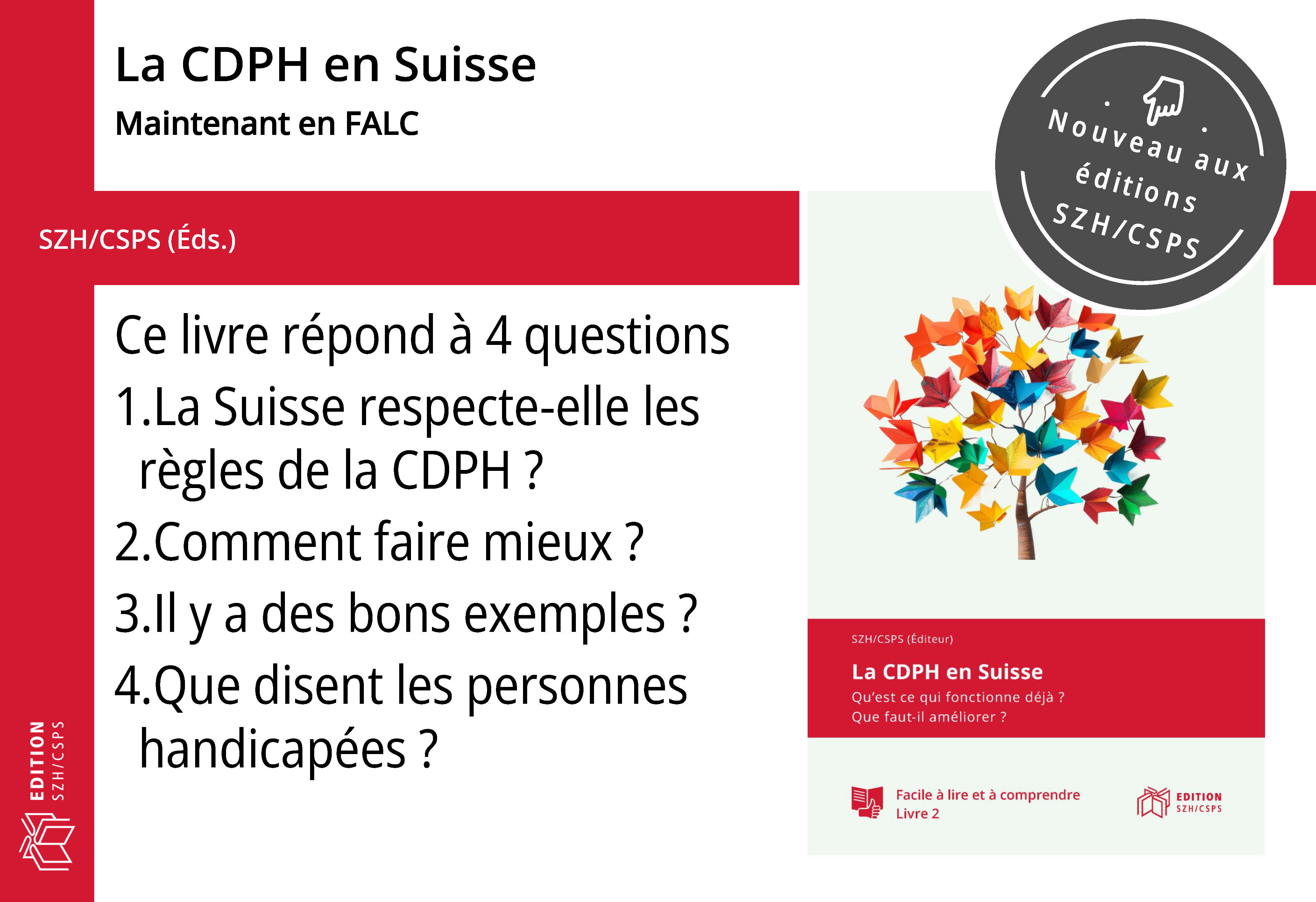Universal Design for Learning Observation – Measurement Tool
Traduction et adaptation interculturelle en français et en italien
DOI :
https://doi.org/10.57161/r2024-03-03Mots-clés :
Conception universelle de l’apprentissage, enseignement inclusif, grille d’observation, traduction, adaptation interculturelleRésumé
La Conception universelle de l’apprentissage (CUA) se profile comme un cadre possible pour concevoir des environnements scolaires flexibles et inclusifs. Sa mise en œuvre en classe peut être parfois difficile à mesurer. Le Universal Design for Learning Observation – Measurement Tool (UDL-OMT) est un outil conçu pour observer et mesurer la présence de la CUA dans les séquences d’enseignement. Cet outil a été traduit et adapté de l’anglais au français et à l’italien. Il est en cours de validation. Cette contribution présente l’UDL-OMT, ainsi que les étapes et les résultats principaux de la procédure de traduction.
Références
Ballangrud, R., Husebø, S. E., & Hall-Lord, M. L. (2017). Cross-cultural validation and psychometric testing of the Norwegian version of the TeamSTEPPS® teamwork perceptions questionnaire. BMC Health Services Research, 17(1), 799. https://doi.org/10.1186/s12913-017-2733-y
Basham, J. D., Gardner, J. E., & Smith, S. J. (2020a). Measuring the Implementation of UDL in Classrooms and Schools: Initial Field Test Results. Remedial and Special Education, 41(4), 231-243. https://doi.org/10.1177/0741932520908015
Basham, J. D., Gardner, J. E., & Smith, S. J. (2020b). Universal Design for Learning Observation Measurement Tool (UDL-OMT): Version 1.0 (3/09/2020).
Basham, J. D., & Gardner, J. E. (2010). Measuring universal design for learning. Special Education Technology Practice, 12(2), 15-19. https://doi.org/10.1177/0741932520908015
Basham, J. D., Smith, S. J., & Satter, A. L. (2016). Universal Design for Learning. Journal of Special Education Technolo-gy, 31(3), 147-155. https://doi.org/10.1177/0162643416660836
Beaton, D. E., Bombardier, C., Guillemin, F., & Ferraz, M. B. (2007). Recommendations for the Cross-Cultural Adapta-tion of the DASH & QuickDASH Outcome Measures. Institute for Work & Health. https://dash.iwh.on.ca/sites/dash/files/downloads/cross_cultural_adaptation_2007.pdf
Brillante, P., & Nemeth, K. (2018). Universal Design for Learning in the Early Childhood Classroom: Teaching Children of All Languages, Cultures, and Abilities, Birth—8 Years. Routledge. https://doi.org/10.4324/9781315622736
Capp, M. J. (2017). The effectiveness of universal design for learning: a meta-analysis of literature between 2013 and 2016. International Journal of Inclusive Education, 21(8), 791-807. https://doi.org/10.1080/13603116.2017.1325074
Center for Applied Special Technology [CAST]. (2011). Universal Design for Learning Guidelines: version 2.0. https://udlguidelines.cast.org/more/downloads
Chita-Tegmark, M., Gravel, J. W., Maria De Lourdes, B. S., Domings, Y., & Rose, D. H. (2012). Using the Universal Design for Learning Framework to Support Culturally Diverse Learners. Journal of Education, 192(1), 17–22. https://doi.org/10.1177/002205741219200104
Corbière, M., & Fraccaroli, F. (2020). La conception, la validation, la traduction et l’adaptation transculturelle d’outils de mesure : Des exemples en santé mentale et travail. Dans M. Corbière et N. Larivière (Eds.), Mé-thodes qualitatives, quantitatives et mixtes : Dans la recherche en sciences humaines, sociales et de la santé (2e éd., pp. 703-752). Presses de l’Université du Québec.
Edyburn, D. L. (2010). Would You Recognize Universal Design for Learning if You Saw it? Ten Propositions for New Directions for the Second Decade of UDL. Learning Disability Quarterly, 33(1), 33–41. https://doi.org/10.1177/073194871003300103
Florian, L. (2010). The concept of inclusive pedagogy. In F. Hallett et G. Hallett (Eds.), Transforming the role of the SENCo: Achieving the national award for SEN Coordination (pp. 61-72). Open University Press.
Galkienė, A., & Monkevičienė, O. (Eds.). (2021). Improving Inclusive Education through Universal Design for Learning (Vol. 5). Springer International Publishing. https://doi.org/10.1007/978-3-030-80658-3
Hallett, F., & Hallett, G. (Eds.). (2010). Transforming the role of the SENCo: Achieving the national award for SEN Coordi-nation. Open University Press.
International Test Commission [ICT]. (2017). ITC Guidelines for Translating and Adapting Tests (2nd ed.). https://www.intestcom.org/files/guideline_test_adaptation_2ed.pdf
King-Sears, M. E., Stefanidis, A., Evmenova, A. S., Rao, K., Mergen, R. L., Owen, L. S., & Strimel, M. M. (2023). Achievement of learners receiving UDL instruction: A meta-analysis. Teaching and Teacher Education, 122, Arti-cle 103956. https://doi.org/10.1016/j.tate.2022.103956
Knarlag, K., & Waters, B. (2016). Universal Design for Learning—Licence to Learn (UDLL): A European perspective on UDL. The AHEAD Journal, (4), 46-55. https://www.ahead.ie/journal/Universal-Design-for-Learning-Licence-to-Learn-UDLL-a-European-perspective-on-UDL
Kurniawati, F., De Boer, A. A., Minnaert, A., & Mangunsong, F. (2014). Characteristics of primary teacher training programmes on inclusion: a literature focus. Educational Research, 56(3), 310-326. https://doi.org/10.1080/00131881.2014.934555
Lakkala, S., & Kyrö-Ämmälä, O. (2021). Teaching for Diversity with UDL: Analysing Teacher Competence. In A. Galkienė & O. Monkevičienė (Eds.), Improving Inclusive Education through Universal Design for Learning (pp. 241-277). Springer International Publishing.
Meyer, A., Rose, D. H., & Gordon, D. T. (2014). Universal design for learning: Theory and practice. CAST Professional Publishing.
Navaitienė, J., & Stasiūnaitienė, E. (2021). The Goal of the Universal Design for Learning: Development of All to Expert Learners. In A. Galkienė & O. Monkevičienė (Eds.), Improving Inclusive Education through Universal De-sign for Learning (pp. 23-57). Springer International Publishing. https://link.springer.com/chapter/10.1007/978-3-030-80658-3_2
Ok, M. W., Rao, K., Bryant, B. R., & McDougall, D. (2017). Universal Design for Learning in Pre-K to Grade 12 Class-rooms: A Systematic Review of Research. Exceptionality, 25(2), 116-138. https://doi.org/10.1080/09362835.2016.1196450
Organisation des Nations Unies [ONU]. (2006). Convention relative aux droits des personnes handicapées (CDPH). https://www.un.org/esa/socdev/enable/documents/tccconvf.pdf
Peña, E. D. (2007). Lost in Translation: Methodological Considerations in Cross-Cultural Research. Child Develop-ment, 78(4), 1255-1264. https://doi.org/10.1111/j.1467-8624.2007.01064.x
Rao, K. (2015). Universal design for learning and multimedia technology: Supporting culturally and linguistically diverse students. Journal of Educational Multimedia and Hypermedia, 24(2), 121-137. https://www.learntechlib.org/p/148703/
Rao, K., Ok, M. W., & Bryant, B. R. (2014). A Review of Research on Universal Design Educational Models. Remedial and Special Education, 35(3), 153-166. https://doi.org/10.1177/0741932513518980
Rose, D. H., & Gravel, J. W. (2009). Getting from Here to There: UDL, Global Positioning Systems, and Lessons for Improving. In D. T. Gordon, J. W. Gravel & L. A. Schifter (Eds.), A policy reader in universal design for learning (pp. 5-18). Harvard Education Press.
Rose, D. H., & Meyer, A. (2002). Teaching every student in the digital age: Universal design for learning. Association for supervision and curriculum development.
Rusconi, L., & Squillaci, M. (2023). Effects of a Universal Design for Learning (UDL) Training Course on the Devel-opment Teachers’ Competences: A Systematic Review. Education Sciences, 13(5), Article 466. https://doi.org/10.3390/educsci13050466
Tremblay, P. (2015). Inclusion scolaire et transformation des dispositifs de scolarisation des élèves à besoins spéci-fiques. La nouvelle revue de l’adaptation et de la scolarisation, 70-71(2), 51-65. https://doi.org/10.3917/nras.070.0051
United Nations Educational, Scientific and Cultural Organization [UNESCO] (1994). The Salamanca Statement and Framework for Action on Special Needs Education: Access and Quality.
Zhang, L., Basham, J. D., & Carter, R. A. (2022). Measuring personalized learning through the Lens of UDL: Devel-opment and content validation of a student self-report instrument. Studies in Educational Evaluation, 72, Arti-cle 101121. https://doi.org/10.1016/j.stueduc.2021.101121
Publiée
Comment citer
Numéro
Rubrique
Licence
© Laura Rusconi, Daniela Gäng-Pacifico 2024

Ce travail est disponible sous la licence Creative Commons Attribution 4.0 International .




